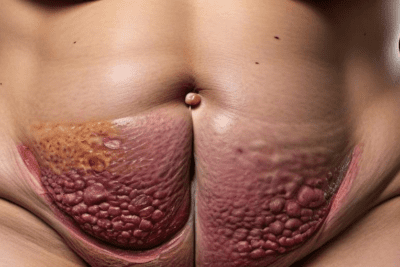
Type 1 Diabetes in Kids: Early Warning Signs and Symptoms

- Type 1 Diabetes in Kids: Early Warning Signs and Symptoms
- Understanding Type 1 Diabetes
- Recognizing the Early Warning Signs of Diabetes in Children
- How to Respond if You Suspect Type 1 Diabetes in Your Child
- Managing Type 1 Diabetes in Kids
- In Conclusion
- Early signs of juvenile diabetes
- Early warning signs of diabetes in children
Type 1 Diabetes in Kids: Early Warning Signs and Symptoms
Living a life with Type 1 diabetes is no simple feat, especially for children. Understanding and recognizing the early warning signs and symptoms, including the early signs of juvenile diabetes, is essential to ensuring optimal management and care. In this comprehensive guide, we'll delve deep into the world of Type 1 diabetes in kids, providing you with valuable insights that will equip you to handle this condition effectively.
Understanding Type 1 Diabetes
Type 1 diabetes, also known as juvenile diabetes, is an autoimmune condition where the pancreas produces little to no insulin. Insulin is a hormone that allows cells to use glucose for energy, and without it, blood sugar levels can dangerously escalate. The onset of Type 1 diabetes is most common in children and young adults but can occur at any age.
Recognizing the Early Warning Signs of Diabetes in Children
Being aware of the early warning signs of diabetes in children is crucial for early intervention and management. Here we will highlight some of the early signs of juvenile diabetes to help parents and caregivers identify potential issues promptly.
Frequent Urination and Thirst
High blood sugar levels result in excessive urine production as the body tries to rid itself of the extra glucose. Consequently, this may lead to frequent trips to the bathroom. This increase in urination can cause children to become dehydrated, making them feel excessively thirsty, which are early warning signs of diabetes in children.
Unexplained Weight Loss
Despite consuming a healthy diet, your child may lose weight rapidly. This happens because their body starts burning fat and muscle for energy due to inadequate insulin levels.
Increased Hunger
Since the body can't utilize glucose efficiently, kids with Type 1 diabetes may experience constant hunger, even after meals. This symptom is a key part of the early warning signs of diabetes in children.
Fatigue
Children with uncontrolled diabetes may feel consistently tired or fatigued, as their cells aren't receiving enough glucose for energy, which is a common concern when considering the early signs of juvenile diabetes.
Irritability or Behavioral Changes
An often overlooked sign is changes in behavior. Kids may become more irritable or moody due to high or low blood sugar levels, which can be an early indication of juvenile diabetes.
Blurry Vision
High blood sugar levels can cause the lens in the eyes to swell, resulting in blurry vision, a common symptom of diabetes.
Fruity-Smelling Breath
A sign of diabetic ketoacidosis (DKA), a severe complication, is a fruity or acetone-like smell on the breath. This occurs when the body starts breaking down fats instead of glucose for energy, producing ketones, which can build up in the blood and urine.
How to Respond if You Suspect Type 1 Diabetes in Your Child
If you observe any of these symptoms, it's crucial to consult a pediatric endocrinologist immediately. Early diagnosis and recognition of the early warning signs of diabetes in children are key in managing Type 1 diabetes in kids effectively and preventing severe complications.
Managing Type 1 Diabetes in Kids
Managing Type 1 diabetes requires consistent monitoring of blood sugar levels, insulin administration, and maintaining a balanced diet and regular exercise. It can be a challenge, but with the right support and education, kids with diabetes can lead healthy, fulfilling lives.
In Conclusion
The journey of managing Type 1 diabetes in kids starts with understanding the early warning signs and symptoms. By staying informed and vigilant, parents can ensure their child gets the necessary care and treatment. Remember, early detection and proper management can make all the difference for a child living with Type 1 diabetes. https://diabetescurenow.com/
Early signs of juvenile diabetes
Early signs of juvenile diabetes, also known as Type 1 diabetes, can manifest suddenly and should not be overlooked. Children may exhibit symptoms such as excessive thirst (polydipsia) and frequent urination (polyuria). These symptoms occur because the body is trying to rid itself of excess glucose through urine, leading to dehydration and increased thirst.
Another common early indication is increased hunger (polyphagia). Despite eating normally or even more than usual, a child with juvenile diabetes may still feel hungry. This occurs because the body is unable to effectively use glucose for energy, leaving the child feeling fatigued and hungry.
Additionally, parents may notice unexplained weight loss in their child. This can happen when the body starts using fat and muscle for energy due to the lack of insulin. Other symptoms may include fatigue, irritability, and blurred vision. Recognizing these signs early is crucial for timely medical intervention.
Here’s a summary of the early signs of juvenile diabetes:
- Excessive thirst
- Frequent urination
- Increased hunger
- Unexplained weight loss
- Fatigue and irritability
- Blurred vision
Early warning signs of diabetes in children
Type 1 diabetes in children can manifest through various early warning signs that parents should be vigilant about. One of the most common symptoms is increased thirst, known as polydipsia, where children may drink excessive amounts of water. This is often accompanied by frequent urination, or polyuria, as the body attempts to eliminate excess glucose through urine.
Another significant indicator is unexplained weight loss. Despite eating normally or even increased appetite, children may lose weight due to the body not being able to utilize glucose effectively for energy. This can lead to fatigue and a general feeling of weakness, which are crucial signs to observe.
In some cases, children may also experience blurred vision as a result of fluctuating blood sugar levels. If a child suddenly complains about their eyesight, it might be a signal to consult a healthcare provider. It's essential to monitor these symptoms closely and seek medical advice if they persist.
To summarize, here are the key early warning signs of type 1 diabetes in children:
- Increased thirst
- Frequent urination
- Unexplained weight loss
- Extreme fatigue
- Blurred vision










